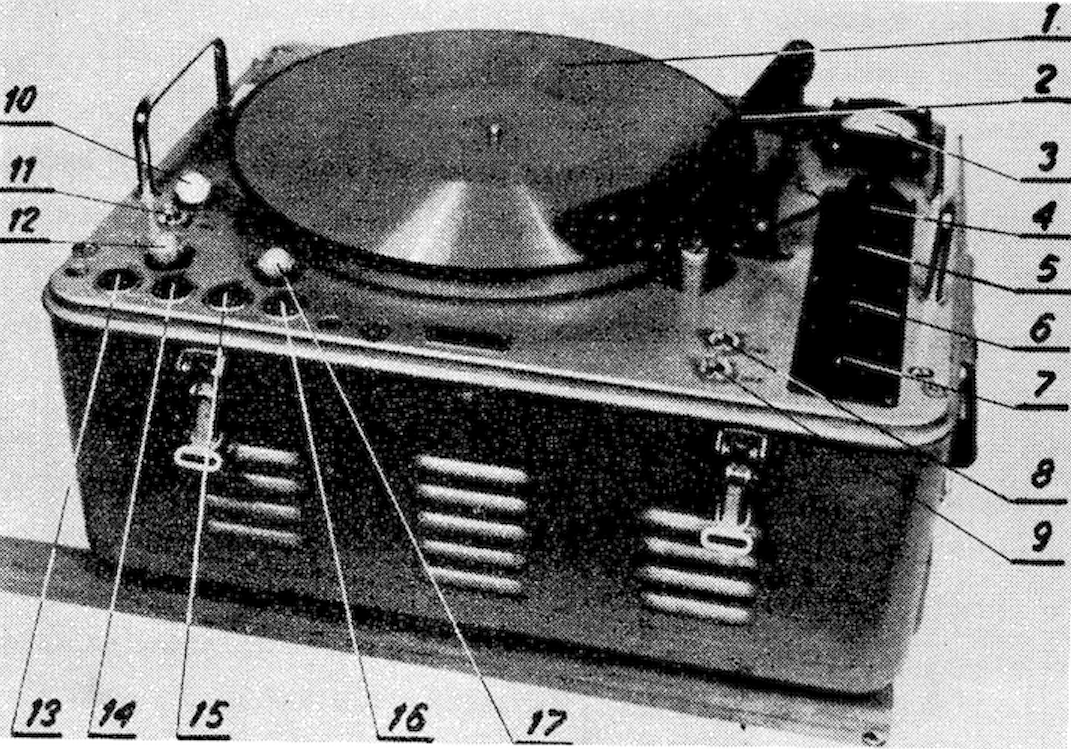2021 year
Written by Marek Kaiper
Special tape recorders in the aviation of the PRL: P-181, MN-63, MAK-S i M-64
In the military aviation in the times of the Polish People’s Republic, various types of tape recorders, most often produced by the USSR, were used to record ground-to-air conversations, telephone conversations and for special purposes. The country had experience in recording sound, which was carried out in many ways. That is, work on electromechanical sound recording systems was carried out using the method of gouging grooves on a 35 mm film strip (szorinophone – named after the designer A.F. Szorin). So instead of carving a sound groove on a phonograph cylinder or on a gramophone record, a tape groove was used. Another method was optical recording on a paper tape 35 mm wide. Shorinophones, also in portable versions, recorded on film, cutting sound grooves with a special ruby or sapphire stylus on a 35 mm photographic tape glued into a ring, it contained 8 tracks. During playback, the stylus was replaced with a steel needle. It was not a very good recording technique due to the poor quality of the celluloid film tapes at the time. After the war, Polish radio used shorinophones for a short time. A similar device was developed by the German engineer Karl Daniel from the Tefi-Apparatebau company in 1930. His device, called Tefiphon, also recorded sound grooves with a stylus on a looped tape, 30 m long, at a speed of 19 cm / sec. However, the tape was made of polyvinyl chloride specially manufactured for this device. Production from 1939 was intended for the army, from its end it was available for private use, in production until the beginning of the 70s. On sale were classical music pieces placed on tapes in a cassette slightly larger than the later 8-Track cassette tapes. During the war, the Luftwaffe developed the SKG 1 (Sprachkennungsgeber) device for the beacon based on tefiphon, introducing a predetermined slogan into its signal leading the plane, e.g. a female name spoken in a female voice. This prevented the planes from being directed to enemy false beacons. The first German serial reel to reel tape recorder was the AEG k1 (1935), which initiated the k2, k3, k4 series. The German military also used AEG Tonschreiber b (Berta), b1, b2, c (Cesar), d (Dora) reel-to-reel tape recorders. An interesting fact was the AEG Tonschreiber c (Cesar) with a spring motor powered by a crank. After the war, such a solution was used in the Nagra II (1953), MIZ-8 (1953) and Dniepr-8 (1954) reporter recorders. German tape recorders initially used a special tape made of durable paper 6.5 mm wide covered with iron particles (patent Fritz Pfleumer 1928). In 1936, BASF developed a new durable tape made of cellulose acetate with an active layer of iron oxide Fe3O4 and then Fe3O3, named type C. In 1938 BASF introduced a polyvinyl chloride tape called type L, which in 1942 was modernized and was called LG. After the war, tapes made of cellulose acetate film (F and FR tapes), polyvinyl chloride (FSR, LGR tapes) and polyester (PE and PES tapes) were produced. The tape width has also been standardized, which is 6.25 mm for reel-to-reel tape recorders and 3.81 mm for CC cassettes and micro cassettes. The tapes are divided into 4 groups due to the composition of the magnetically active layer.
Written by Marek Kaiper

